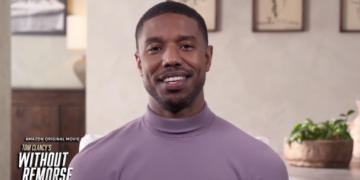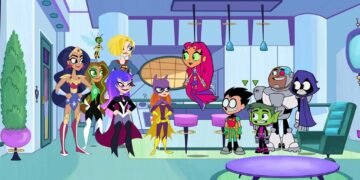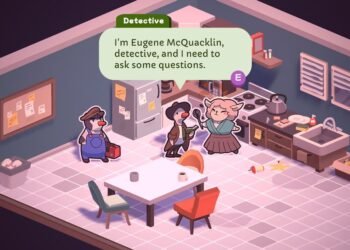The originality of Netflix’s recent horror offerings is questionable, which is to say that these movies often stand on the shoulders of their genre predecessors. The Fear Street series nods so often at Scream, Friday the 13th, and The Witch that it fell short in developing an identity of its own. No One Gets Out Alive noticeably overlaps with His House in terms of reimagining a haunted house as a source of socially fraught terror and tension. And the streaming service’s latest, There’s Someone Inside Your House, is similarly indebted to films like Black Christmas, Haze, and I Know What You Did Last Summer, which it explicitly references. There is one creepy conceit in There’s Someone Inside Your House, but that one genuinely spooky detail can’t counter the overall familiarity. There’s Someone Inside Your House is intermittently effective, but ultimately unremarkable, and it feels like a product of its time in disappointing ways.
In adapting Stephanie Perkins’ 2017 novel, director Patrick Brice and screenwriter Henry Gayden rely too often on simplistic dynamics that make for flat world-building. There’s little depth here to either the location or the characters. The small town consists of a school, a police station, a church, and cornfields — obviously, viewers are meant to understand that it’s meant to be oppressive. The outcast protagonists are ethnically, biologically, and sexually diverse — it’s clear viewers are intended to empathize with their otherness. The bullies are all mini neo-Nazis, with dialogue that lambasts “fake news,” advocates an alliance with white power, and regurgitates toxic masculinity. The intended point: Their parents probably all voted for Donald Trump.
These components all feel perfunctory, like Brice and Gayden checking boxes off a list of what they think Gen-Z teenagers will respond to. That superficiality means that There’s Someone Inside Your House has to offer something unique in the slasher department to set itself apart, and results are uneven there, too. In an unnerving touch, the killer wears a 3D-printed copy of their latest victim’s face. That costuming choice underscores the killer’s ideology that each of the victims deserves death for their hypocrisy. But those slasher sequences lack the propulsive energy and over-the-top grotesquerie needed to jolt There’s Someone Inside Your House to life. There are bursts of blood from sliced-open tendons, torsos, and throats, but the artificiality of that candy-red gore extends to the whole contrived movie.
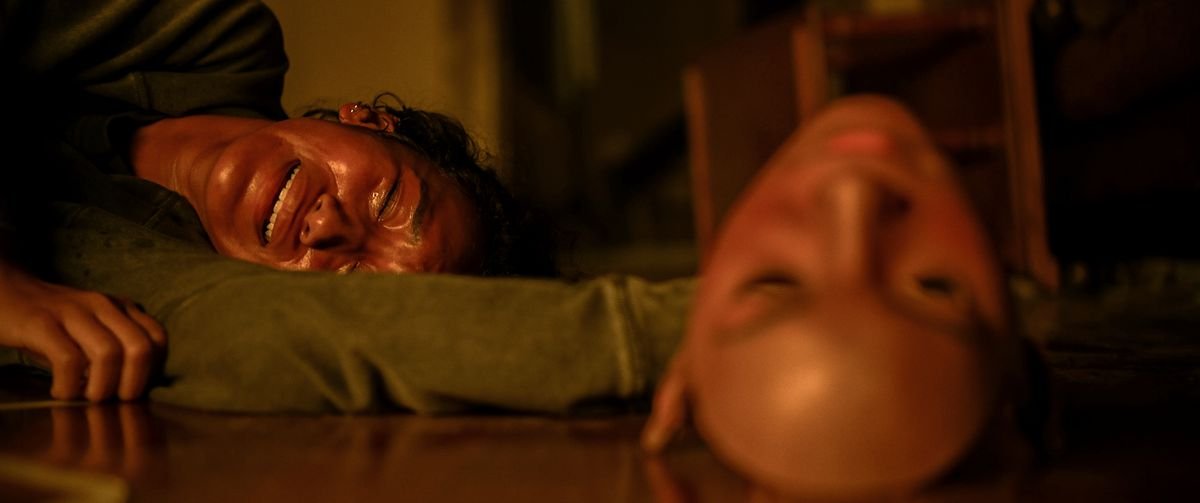
Photo: Netflix
There’s Someone Inside Your House set in rural Osborne, an insular community shocked by the film’s opening-scene murder of football player Jackson Pace (Markian Tarasiuk). The photos strewn around Jackson’s dead body and texted to everyone in town reveal an ugly secret: He once beat up teammate Caleb Greeley (Burkely Duffield) in a hazing ritual gone too far. Some people point fingers at Caleb for Jackson’s death, while others, like those Jackson harassed and abused for years, feel a sense of grim satisfaction.
Hovering on the outside of those reactions is new-to-town Makani Young (Sydney Park), who left her parents in Hawaii to live with her grandmother in Osborne. She didn’t know Jackson very well, but she sees how his death fails to faze her friends: outspoken Alex (Asjha Cooper), sensitive Rodrigo (Diego Josef), space-obsessed Darby (Jesse LaTourette), and irresponsible Zach (Dale Whibley). They don’t really care that Jackson is dead (“Fuck these reactive people!” Darby says of her former bully), but they’re curious who could have done it. And they’re quick to point fingers at classmate Ollie Larsson (Théodore Pellerin), who they describe as an “all-in-black school-shooter style icon,” and casually label a sociopath.
No one seems to catch the longing eyes Makani and Ollie are making at each other, because Makani’s friends are too busy doing what teenagers in all horror movies do. They hook up, they party, they miss the killer in their midst, and then they start dying. So it goes in There’s Someone Inside Your House, same as it ever was.
On the good side of things are Park and Pellerin, who give the film’s most naturalistic performances as Makani and Ollie. A secret make-out session in a parked car has more thrills than any of the film’s murder sequences because of Park and Pellerin’s oppositional chemistry, which brings to mind the doomed J.D. and Veronica from Heathers. Less successful is William Arnold’s production design, in particular the prevalence of secret-revealing photographs at each murder scene. The film moves so quickly through these hundreds of printed-out images of bloody faces and burned hands that they lack impact. (At least the killer is getting good use out of their printer!)
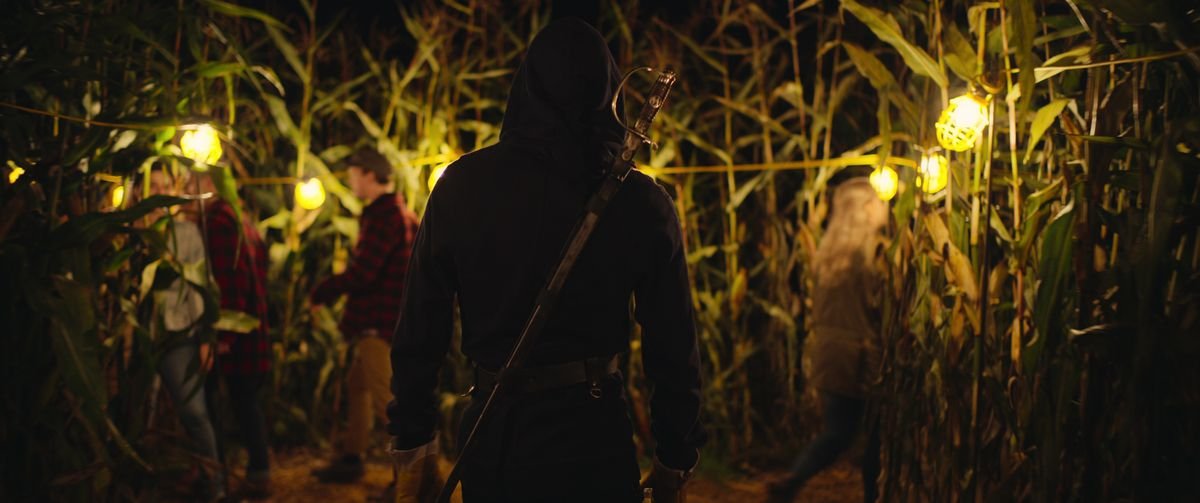
Photo: Netflix
But the staging of these scenes exhibits more care than the film’s attempted critique of white privilege, which results in an altercation so soaked in Serious Statements that it forgets horror can have a little bit of fun. Plus, there are not one, but two, hazing-gone-wrong subplots here, which raises the question: Why not just add a third and call it a trend?
“I have watched a lot of true crime,” sniffs student council president Katie Koons (Sarah Dugdale) when the murders start happening, and that statement applies to There’s Someone Inside Your House on a grander scale. This is a film crafted by people who are aware of the genre’s tropes, but unaware of how to put a unique spin on them. The result is that the film never fully transcends the level of “put on in the background while decorating for Halloween” movie. When will the next great slasher film arrive? When will someone dare to be as inventive or as gruesome as this genre requires? There’s Someone Inside Your House will keep people waiting.
There’s Someone Inside Your House is streaming on Netflix starting Oct. 6, 2021.


